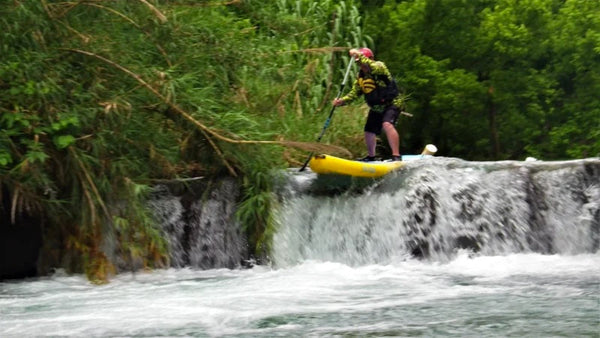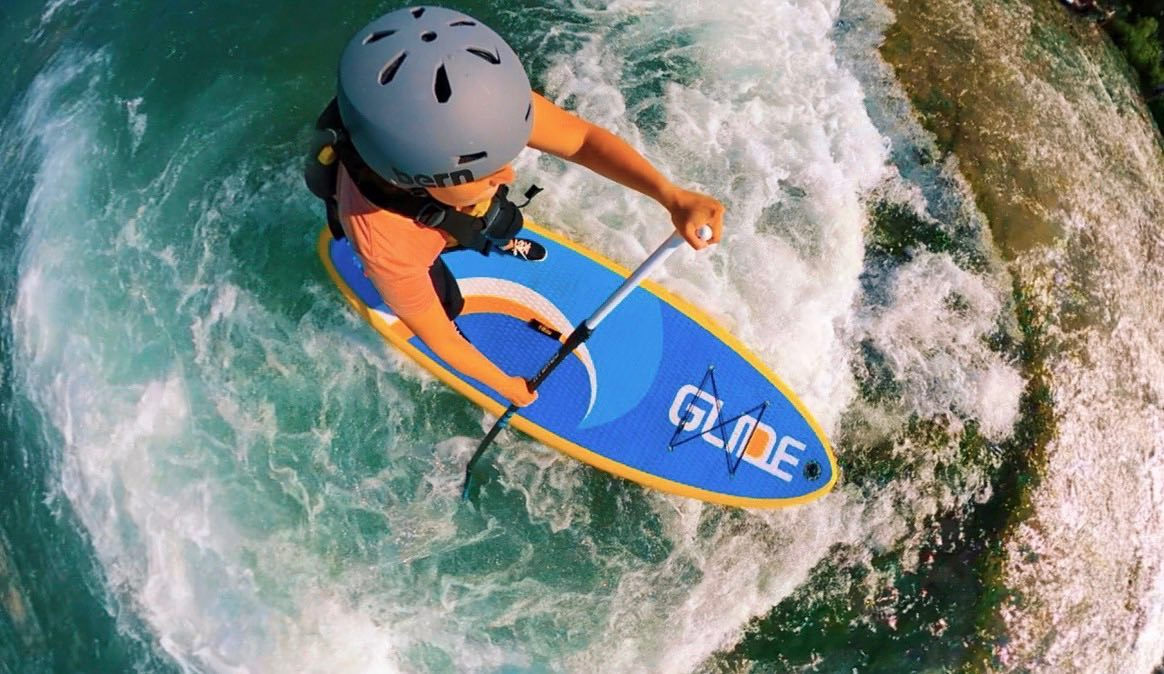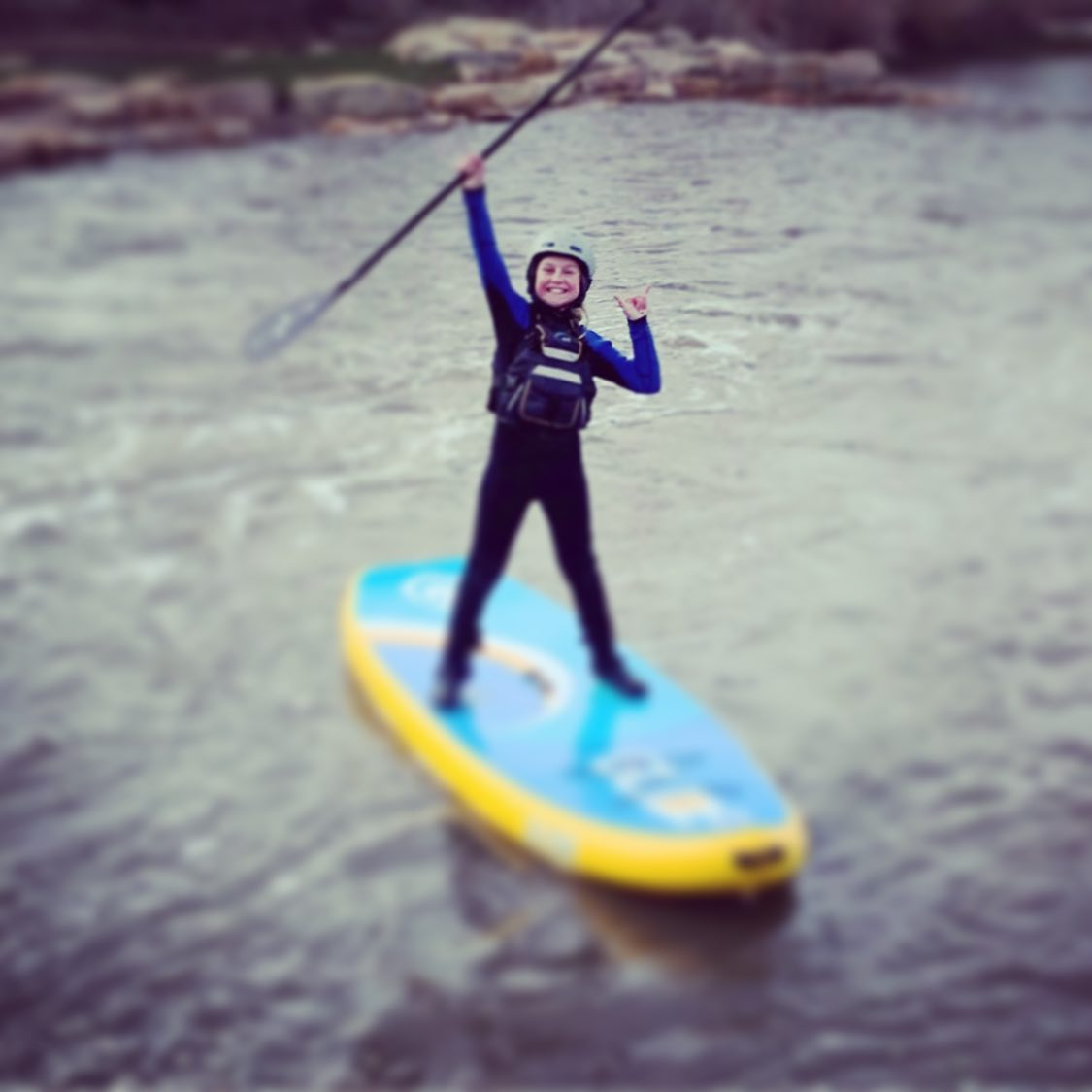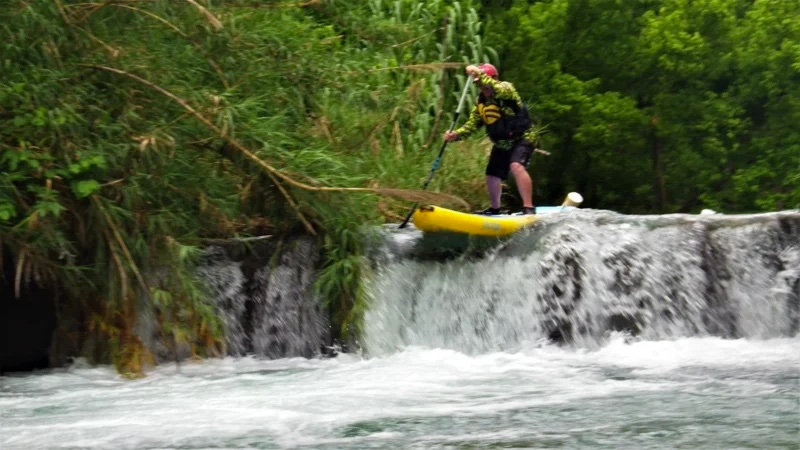
Whitewater Paddle Board Gear, Skills, and Safety for Rapids
Get river-ready: iSUP gear, quick-release waist leash, helmet/PFD, short fins, ferry glides, eddy turns, and smart scouting. Start Class I–II and build to Class III with confidence.
Whitewater paddle boarding pairs SUP skills with river reading. Pick a durable iSUP with rocker, grippy deck, and short river fins.
Wear a PFD, helmet, and a quick-release waist leash—never an ankle leash in current.
Learn the essentials: athletic stance, short forward strokes, bracing, ferry glides, and eddy in/out.
Scout and portage freely, practice defensive swimming (feet up), and build up from Class I–II with mentors before trying Class III.
A small safety kit (throw bag in the group, whistle, knife) and cold-water layers go a long way.
Respect the river, stack skills, and enjoy clean, confident lines.
Table of contents
Whitewater paddle boarding blends the fun of SUP with the focus of river running. You’ll read water, hit eddies, thread wave trains, and sometimes swim—on purpose. With the right gear, skills, and river etiquette, you can trade flatwater laps for moving water confidence from Class I–II “smile miles” to Class III challenges.

Why inflatable boards win on rivers
Most whitewater paddlers choose inflatable whitewater paddle boards because they’re durable and forgiving on rocks. Look for:
Length & width: 8’6”–10’6” long, 33–36" wide for stability.
Rocker: Pronounced nose (and some tail) rocker to ride over holes/waves.
Construction: Double-layer PVC, reinforced rails, multiple grab handles.
Deck: Full or extended diamond grip pad; raised kick pad helps pivot turns.
Fins: Short, flexible river fins (2–4"). Removable side bites or “nub” fins add bite without depth.
Tip: A stiff board matters. Inflate to the recommended PSI so the hull responds instead of folding in waves.
The must-have safety kit (river-specific)
-
PFD: Wear a USCG-approved vest. Low-profile whitewater vests keep shoulders free.
-
Helmet: Whitewater-rated (not a bike or skate lid).
-
Leash: Quick-release waist belt only for rivers. Never ankle/calf leashes in current (foot entrapment risk).
-
Footwear: Closed-toe river shoes with grippy soles.
-
Knife & whistle: River knife on PFD; whistle for signals.
-
Throw bag: In the group; learn how to use it.
-
Thermal protection: Wetsuit or drysuit + layers; cold water multiplies risk.
-
Small kit: First aid, repair patches, fin bolt, tape, snacks, hydration.
-
Comms/plan: Tell someone your put-in, take-out, ETA; set shuttle before you launch.
Read the river: the fundamentals
-
River grades: Class I (easy current) → Class V (expert). Start Class I–II and step up with a mentor.
-
Features to spot:
-
Eddies (calm water behind rocks/bends) = rest stops.
-
Eddy lines (where eddy meets current) = balance checks.
-
Wave trains = fun, usually safe momentum lines.
-
Holes/hydraulics = avoid until trained.
-
Strainers (trees/objects water passes through) = always avoid.
-
-
Scout & portage: Get out. Look. Choose a line. Walking around is a win.
-

Core whitewater SUP skills (with quick cues)
1) Stance & trim
-
Athletic, hip-width stance; soft knees; eyes up.
-
For moves: offset stance (front foot half step forward) for stability.
-
Step briefly back to lift the nose for boofs/pivots, then recover.
2) Bracing (low/high)
-
Low brace: Blade flat near surface, knuckles down—your first save in boils.
-
High brace: More advanced; keep elbows safe (in front of body).
3) Ferry glide
Cross the river without losing ground.
-
Point board slightly upstream (~30°), edge subtly into current, take short strokes.
-
Maintain angle; don’t fight the river—use it.
4) Eddy in / eddy out
-
Eddy in: Approach from current with speed, edge downriver, sweep/brace to carve into calm water.
-
Eddy out: From the eddy, build speed, edge upriver, punch through the eddy line with a couple quick strokes.
5) Strokes that matter
-
Forward (short/quick): Power from torso; exit at feet.
-
Draws & cross-draws: Micro corrections without big yaws.
-
Sweep strokes: Fast direction changes in boils.
-
On-knees mode: Drop to knees anytime for stability and control.
6) Defensive swimming
If you fall:
-
Feet up, downstream to avoid foot entrapment; look where you’re going.
-
Keep hold of your paddle if safe; your waist-release leash keeps the board nearby.
-
Angle toward shore/eddy; don’t stand until water is calf-deep or less.
Progression plan (Class I–II → III)
Phase 1: Calm current
-
Practice ferries, eddy turns, and brace drills on knee-deep riffles.
-
Nail remounts quickly (climb on from the side using the center handle).
Phase 2: Class I–II
-
Link eddy out → ferry → eddy in chains.
-
Run clean wave trains. Practice quick step-backs with the blade planted.
Phase 3: Class II+ with features
-
Scout small holes; practice avoidance lines and safe boofs with a coach.
-
Add speed management: two fast strokes to set angle, then glide.
Phase 4: Taste of Class III (with mentors)
-
Only with experienced partners, helmets, throw bags, and clean swims dialed.
Whitewater checklists you’ll use every session
Pre-launch
-
PSI good, fin bolts snug, leash waist-mounted quick release working, PFD/helmet on, shuttle set, level check (flows).
River signals (basics)
-
Paddle up = Stop/eddy out.
-
Paddle sideways = Move this way.
-
Pat on helmet = I’m OK.
-
Crossed arms overhead = Emergency.
Group flow
-
Leapfrog: one paddler sets safety in an eddy, next runs to the next eddy, and so on.
-
Space out in wave trains; one swimmer at a time is plenty.
Gear picks & tweaks that help
-
Adjustable paddle: Shorten 1–2" from flatwater length for faster cadence/low-brace stability. A smaller blade saves shoulders in boils.
-
Fin setup: Start with a short center fin (2–4"), optional tiny side bites; slide forward for quicker pivots, back for tracking on longer drifts.
-
Extras: Nose/tail grab handles, bow line for landings, padded board bag for rocky shuttles.
Long-distance river days
-
Choose a board with adequate volume for your weight + gear.
-
Drybag + tie-down points; hydration, snacks, repair patch, small pump for iSUPs.
-
Expect changing water temps and shade—layer smart; protect from sun.
Common mistakes on a whitewater paddle board (and quick fixes)
-
Ankle leash in current → Switch to waist quick-release now.
-
Standing too tall → Soften knees; athletic stance lowers your center of gravity.
-
Arm-paddling → Rotate from torso; keep strokes short and near the rail.
-
Over-edging at eddy lines → Subtle edge + speed; let the blade brace, not your ankles.
-
Looking down → Eyes on your line; balance follows vision.
-
Skipping the scout → If you can’t see the rapid, get out and look.
-

Final Thoughts
Rivers reward respect and repetition. Keep your kit river-specific (helmet, PFD, waist quick-release leash), start on friendly flows, and stack wins—eddy to eddy, ferry to ferry. When in doubt, scout or portage. Progress comes fast when you train the fundamentals and paddle with a solid crew. The goal isn’t perfect runs; it’s clean decisions and fun laps.
FAQs
Can beginners try whitewater SUP?
Yes—on Class I–II with mentors or instruction. Start on knees, practice eddy turns and remounts, and build up gradually.
Why is an ankle leash dangerous in rivers?
It can snag on rocks/branches. Always use a quick-release waist belt so you can detach instantly in current.
What board size works best?
Common sweet spot: 8'6"–10'6" long, 33–36" wide, with real nose rocker and a grippy deck.
Do I need a helmet on easy rivers?
Yes. Even shallow riffles have rocks and surprise swims. Wear a whitewater-rated helmet.
How do I cross the river without getting swept downstream?
Use a ferry glide: angle slightly upstream, edge, and take short, quick strokes to traverse.
What fin should I use?
Short, flexible river fins (2–4") and/or tiny side bites. They reduce hang-ups and preserve agility.
I keep getting tripped at eddy lines—help?
Enter with some speed, set a small edge, and use a low brace. Avoid big leans; let the blade stabilize you.
What water levels are “safe”?
There’s no universal safe level. Check local gauges, run reports, and ask experienced locals. When uncertain, choose lower flows.
Is whitewater SUP good cross-training?
Yes: balance, core, cardio, decision-making. It also sharpens your forward stroke under pressure.
When should I walk around a rapid?
When the line isn’t obvious, features exceed your skill, swims would be hazardous, or your gut says “not today.” Portage proudly.





